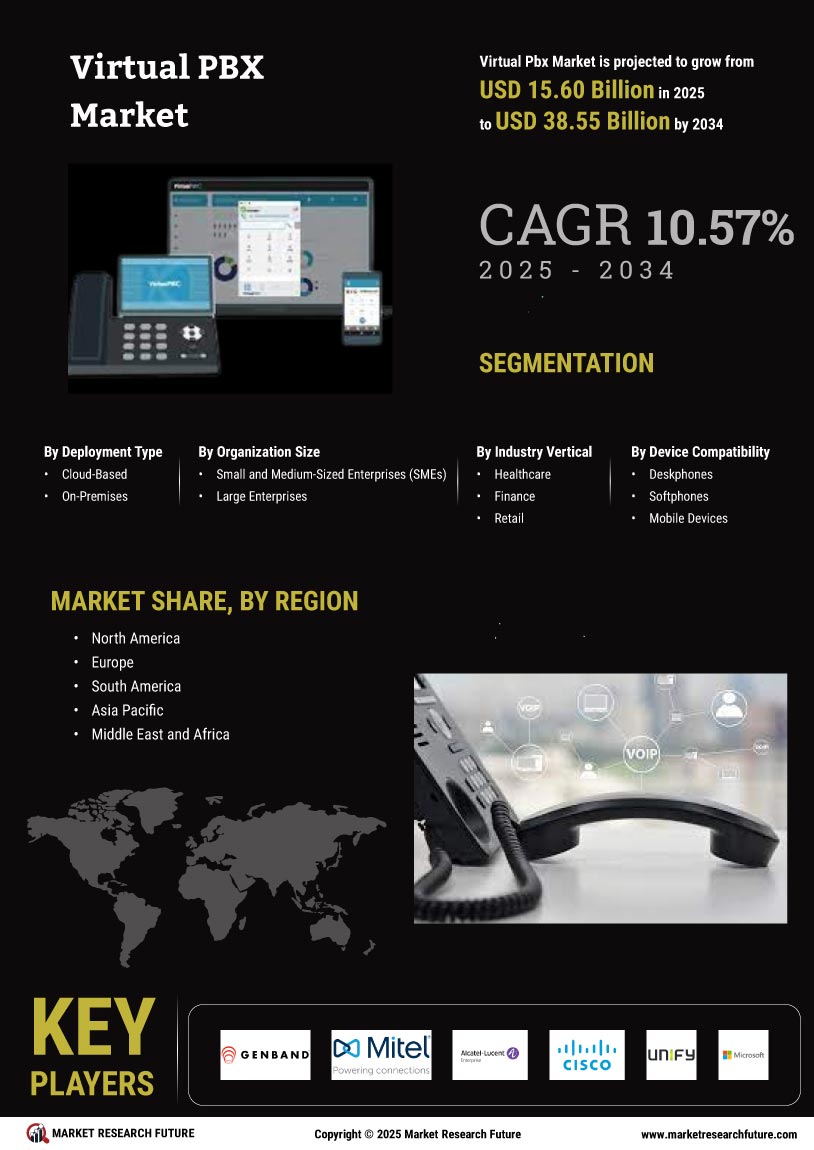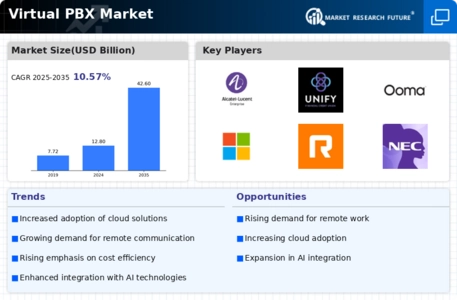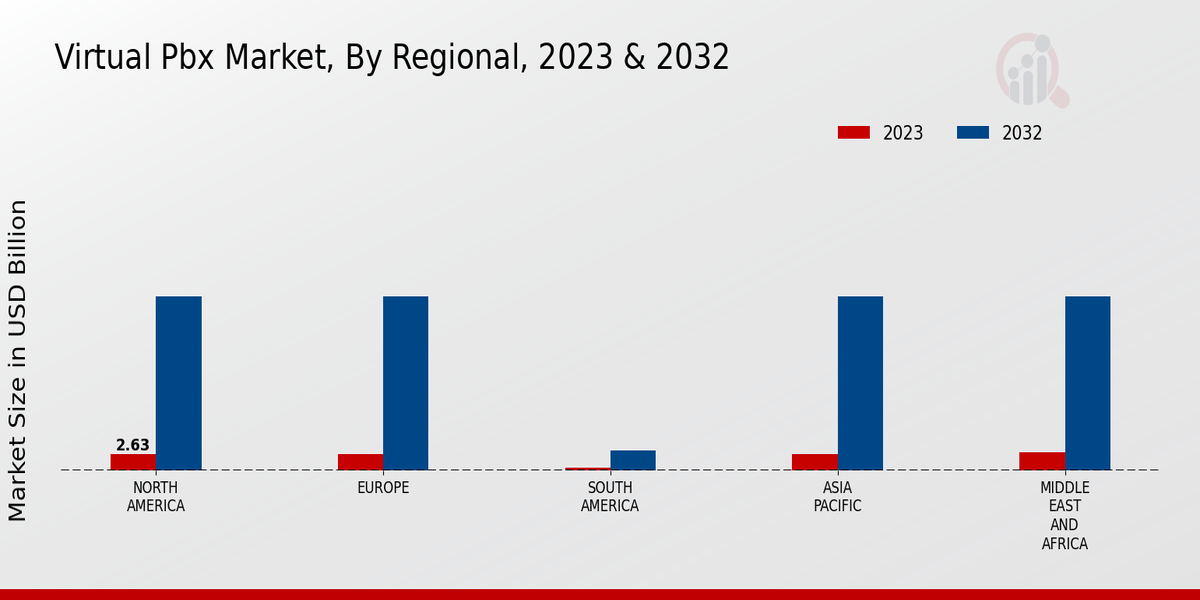Market Growth Projections
The Global Virtual PBX Market Industry is poised for substantial growth, with projections indicating a market size of 12.8 USD Billion in 2024 and an anticipated increase to 42.6 USD Billion by 2035. This growth trajectory suggests a compound annual growth rate of 11.56% from 2025 to 2035, reflecting the increasing adoption of virtual PBX solutions across various sectors. As businesses continue to prioritize cost efficiency, flexibility, and enhanced communication capabilities, the market is likely to expand significantly, driven by technological advancements and changing workplace dynamics.
Increased Adoption of Remote Work Practices
The Global Virtual PBX Market Industry is significantly influenced by the increased adoption of remote work practices. Organizations are recognizing the necessity of maintaining seamless communication among distributed teams. Virtual PBX systems provide the flexibility required for remote work, enabling employees to connect from various locations without compromising on communication quality. This shift is likely to drive market growth, as businesses invest in solutions that support remote collaboration. The anticipated compound annual growth rate of 11.56% from 2025 to 2035 underscores the potential for virtual PBX systems to become integral to modern workplace communication strategies.
Regulatory Support for Cloud-Based Solutions
Regulatory support for cloud-based solutions is emerging as a significant driver in the Global Virtual PBX Market Industry. Governments and regulatory bodies are increasingly endorsing the adoption of cloud technologies, recognizing their potential to enhance business efficiency and innovation. This support often manifests in favorable policies and funding initiatives aimed at promoting digital transformation. As organizations navigate the complexities of compliance and data security, the assurance provided by regulatory frameworks encourages the transition to virtual PBX systems. This trend is likely to contribute to the sustained growth of the market as businesses seek compliant and secure communication solutions.
Growing Focus on Customer Experience Enhancement
Enhancing customer experience is a critical driver within the Global Virtual PBX Market Industry. Businesses are increasingly prioritizing customer satisfaction, leading to the adoption of virtual PBX systems that offer advanced features such as call analytics, interactive voice response, and personalized customer interactions. These features enable organizations to respond more effectively to customer inquiries and improve overall service quality. As companies recognize the importance of customer experience in retaining clients and driving revenue, the demand for sophisticated virtual PBX solutions is expected to rise. This trend aligns with the broader movement towards customer-centric business models.
Rising Demand for Cost-Effective Communication Solutions
The Global Virtual PBX Market Industry experiences a notable surge in demand for cost-effective communication solutions. Businesses increasingly seek alternatives to traditional phone systems, which often entail high installation and maintenance costs. Virtual PBX systems offer flexibility and scalability, allowing organizations to adapt their communication needs without significant financial burdens. As of 2024, the market is projected to reach 12.8 USD Billion, reflecting a growing preference for cloud-based solutions that reduce overhead costs. This trend is particularly pronounced among small and medium-sized enterprises, which are leveraging virtual PBX to enhance operational efficiency while minimizing expenses.
Technological Advancements in Communication Infrastructure
Technological advancements play a pivotal role in shaping the Global Virtual PBX Market Industry. Innovations in cloud computing, artificial intelligence, and VoIP technology enhance the functionality and reliability of virtual PBX systems. These advancements facilitate features such as call routing, voicemail-to-email, and integrated customer relationship management tools, which improve user experience and operational efficiency. As organizations increasingly adopt these technologies, the market is expected to witness substantial growth, with projections indicating a rise to 42.6 USD Billion by 2035. The integration of advanced analytics and reporting tools further empowers businesses to optimize their communication strategies.



















Leave a Comment